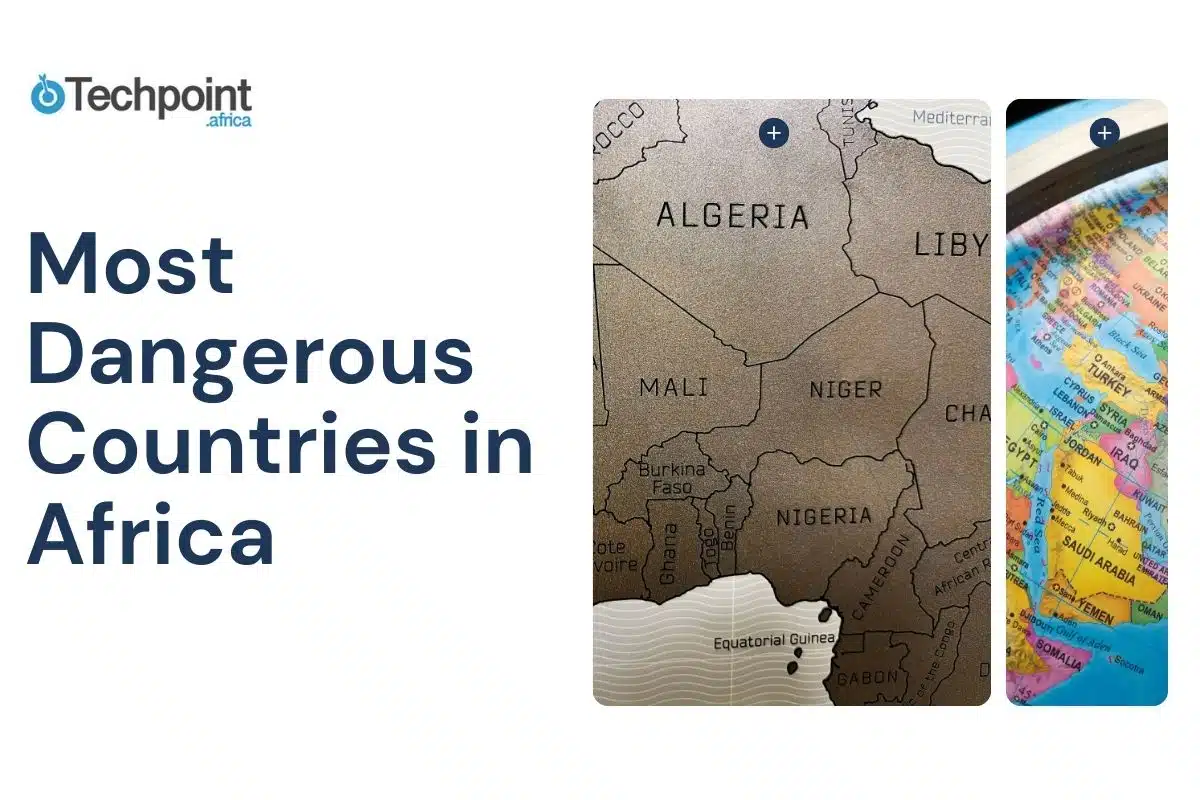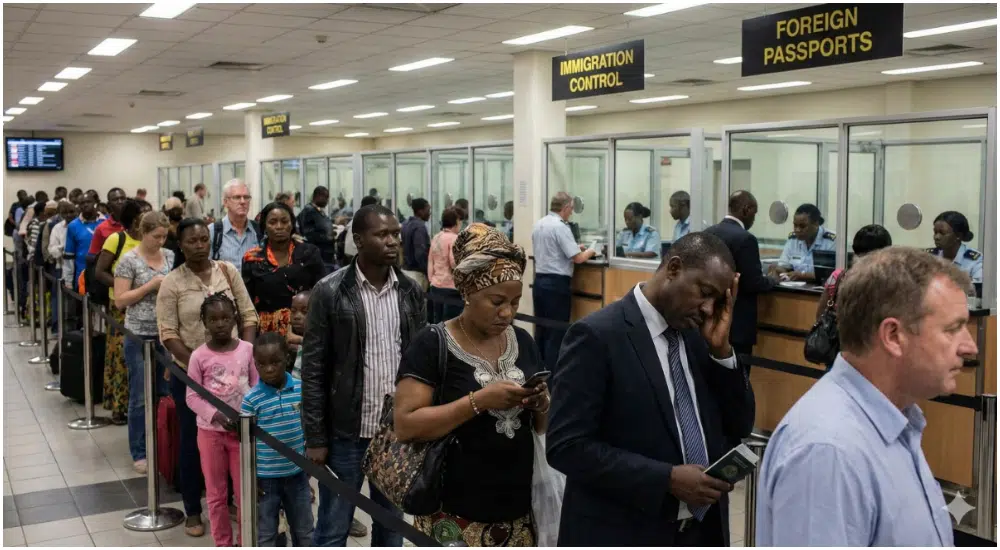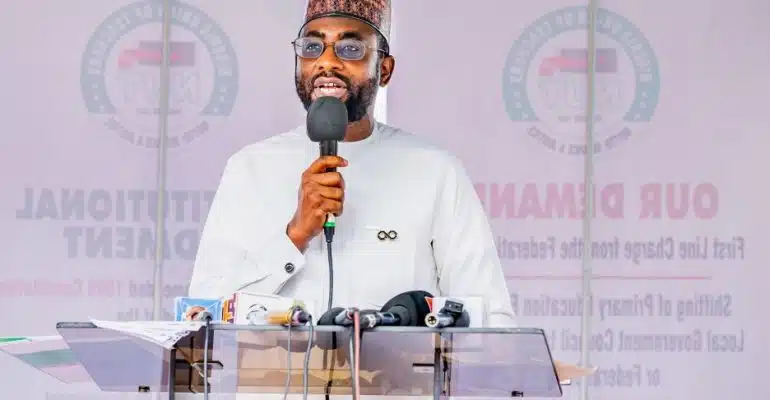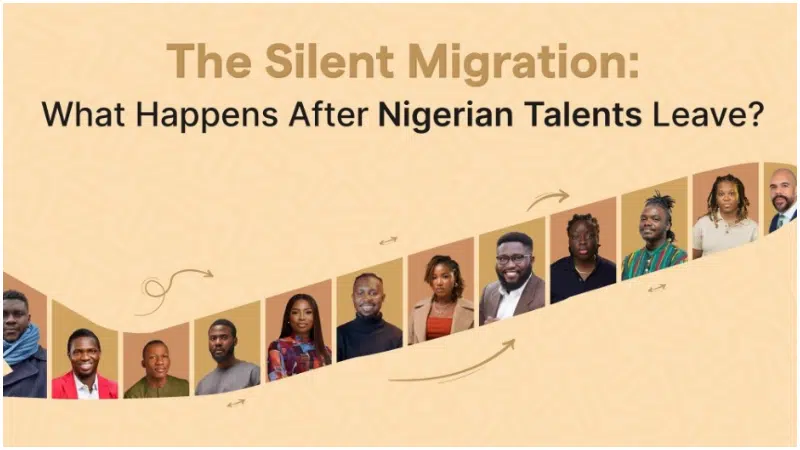No country is without its challenges and Africa is no exception. The continent is vast, diverse, and home to over a billion people living in cities, towns, and rural communities, many of whom go about their daily lives in peace.
That said, some African nations are often ranked among the most dangerous due to issues like armed conflict, political instability, terrorism, or high crime rates. These challenges don’t usually affect the entire country, but rather specific regions. Still, they can create significant risks for both residents and visitors.
In this article, we take a closer look at 10 African countries currently facing serious safety concerns to better understand the complex situations unfolding within their borders.
Most dangerous countries in Africa
Somalia
| Metric | Value |
| Global Peace Index 2024 | Rank: 153/163 • Score: 3.091 |
| Homicide rate (per 100,000) | 6.8 |
| U.S. State Dept Travel Advisory | Level 4: Do Not Travel |
| U.K. FCDO Travel Advice | Advises against all travel to parts of Somalia; advises against all but essential travel to western Somaliland regions |
| Canada Travel Advisory | Avoid all travel |
| Australia Travel Advisory | Do not travel |
| Al-Shabaab violence events (Jan–Nov 2024) | 127 events targeting civilians • 187 reported fatalities |
| Estimated Al-Shabaab fighters | 7,000–12,000 |
| ATMIS troop presence | ~18,000 AU-backed troops (mission through end 2024) |
| Civilians killed by Al-Shabaab (Feb–Oct 2023) | 312 |
| Internally displaced persons (end 2023) | ~3.9 million |
| Registered refugees & asylum-seekers (31 Dec 2024) | 41,765 |
| People in urgent need of food assistance | 4.3 million |
Somalia is often listed among Africa’s most dangerous countries, but like every nation, it’s more than its headlines. Its challenges are rooted in a complex history of civil war, political fragmentation, and extremism. These are layers that continue to affect safety and stability across the country.
Since the collapse of its central government in 1991, Somalia has struggled to establish full control over its territory. Though a federal government exists, its authority is limited outside Mogadishu. Many regions operate under clan rule or militant influence, making governance a patchwork effort.
Al-Shabaab, a militant Islamist group, remains a key driver of instability. They launch frequent attacks on civilians, government targets, and international peacekeepers, mostly in southern and central Somalia. Their presence creates a climate of unpredictability and fear, especially in urban areas.
Beyond conflict, Somalia faces persistent humanitarian crises. Drought, poverty, and displacement affect millions. Access to basic services is limited, and violence often disrupts aid delivery. Even traveling between regions can be risky due to roadblocks, ambushes, or clashes.
Still, Somalia’s story isn’t just one of struggle. Many Somalis, both at home and abroad, are working toward peace and progress. Local peace efforts, community rebuilding, and international partnerships show that despite hardship, hope remains alive.
South Sudan
| Metric | Value |
| Global Peace Index 2024 | Rank: 163/163; Score: 3.903 |
| Homicide rate (per 100,000; 2012) | 14.054 |
| U.S. State Dept Travel Advisory | Level 4: Do Not Travel |
| U.K. FCDO Travel Advice | Advises against all travel |
| Canada Travel Advisory | Avoid all travel |
| Australia Travel Advisory | Do not travel |
| UNMISS troop presence (Feb 2023) | 17,954 total personnel; 13,221 troops |
| Civil war casualties (2013–2018) | ~400,000 killed; ~4 million displaced |
| Internally displaced persons (IDPs) | ~2 million |
| Registered refugees & asylum-seekers | ~2.3 million in neighbouring countries |
| People in need of food assistance | ~8 million hungry |
When South Sudan gained independence in 2011, there was global celebration and a sense of fresh hope. But that optimism quickly faded as the new nation spiraled into political rivalry, ethnic tension, and civil war. Today, it’s not just one of Africa’s most fragile countries, it’s also one of the most complex.
The relationship between President Salva Kiir and former Vice President Riek Machar has been at the heart of the country’s instability. What began as a political disagreement in 2013 erupted into full-blown civil war, displacing millions and deepening ethnic divisions. Though a peace deal was signed, tensions remain high, and violence flares up with little warning.
Food insecurity affects more than half the population. Infrastructure is minimal, basic services are scarce, and regional conflicts further complicate recovery efforts. Armed groups still operate with impunity in parts of the country, and humanitarian access is constantly under threat.
South Sudan is stuck in a cycle of conflict and fragile ceasefires, but it’s not a country without potential. Its people have shown incredible resilience in the face of hardship. Artists, educators, and peace activists continue to push for change, even when progress is slow. The road ahead is rough but not impossible.
Central African Republic
| Metric | Value |
| Global Peace Index 2024 | Rank 150/163 • Score 3.009 |
| Homicide rate (per 100,000) | 29.1 |
| U.S. State Dept Travel Advisory | Level 4: Do Not Travel |
| U.K. FCDO Travel Advice | Advises against all travel to parts of CAR |
| Canada Travel Advisory | Avoid all travel |
| Australia Travel Advisory | Do not travel |
| MINUSCA authorised strength | 17,420 total personnel |
| Internally displaced persons (IDPs) | 500,000 |
| Registered refugees & asylum-seekers | 725,900 |
| People in need of humanitarian assistance (2024) | 2.8 million |
The Central African Republic (CAR) rarely makes global headlines, but when it does, it’s usually for the wrong reasons. Behind its quiet name is a country rocked by coups, conflict, and cycles of violence that have kept millions in survival mode.
Since a 2013 coup led by the Seleka rebel coalition, CAR has struggled to regain control. What followed was a violent retaliation by anti-Balaka militias, leading to deep sectarian violence between Muslim and Christian communities. Today, more than a dozen armed groups continue to carve up territory and terrorize civilians.
Nearly one in four people in CAR is either displaced or seeking asylum. Schools, hospitals, and roads are scarce or unsafe. And aid workers? They’re often forced to flee or operate in extreme danger. In some areas, the state exists in name only.
Despite the heavy toll, CAR is also home. People still plant crops, raise families, and sing in churches. In the capital, Bangui, local entrepreneurs and youth groups are trying to create opportunities and stability in the chaos. It’s not easy, but they haven’t given up.
Democratic Republic of the Congo
The Democratic Republic of the Congo (DRC) is a paradox of immense natural wealth juxtaposed with profound instability. Despite its vast reserves of minerals like cobalt and diamonds, the nation has been marred by decades of conflict, making daily life precarious for many of its citizens.
Since the 1990s, the DRC has been a battleground for numerous armed groups vying for control over territories and resources. The eastern regions, in particular, have seen relentless clashes involving militias such as the Allied Democratic Forces (ADF) and the March 23 Movement (M23). These groups not only confront government forces but also inflict terror upon local communities, leading to mass displacements and casualties.
It’s ironic that a country so rich in resources faces severe humanitarian crises. Over 5 million people are internally displaced, and countless others suffer from malnutrition and lack of basic services. The exploitation of mineral wealth often fuels conflict rather than development, leaving the populace in a cycle of poverty and violence.
Yet, amidst the turmoil, the Congolese spirit remains unbroken. Vibrant music scenes in Kinshasa, grassroots peace initiatives, and a burgeoning youth movement signal a populace eager for change. The DRC’s story is still being written, with hope as an indelible chapter.
Mali
| Metric | Value |
| Global Peace Index 2024 (Rank / Score) | 154 / 3.095 |
| Homicide rate (per 100 000; 2015) | 10.8 |
| U.S. State Dept Travel Advisory | Level 4: Do Not Travel |
| U.K. FCDO Travel Advice | Advises against all travel to Mali, except to Bamako |
| Canada Travel Advisory | Avoid all travel |
| Australia Travel Advice | Do not travel due to dangerous security situation and risk of terrorism/kidnapping |
| MINUSMA authorised strength | Up to 11 200 military personnel |
| Internally displaced persons (end 2023) | ~344 000 |
| Registered Malian refugees & asylum-seekers in Mauritania (Jul 2024) | 233 240 |
| People in need of humanitarian assistance (2024) | 7.1 million |
Once the heartland of great empires like Mali and Songhai, modern-day Mali grapples with challenges that threaten its stability and heritage. The nation’s rich history contrasts sharply with its current struggles against insurgency and political upheaval.
Northern Mali has become a hotspot for Islamist militant activities since 2012. Groups linked to Al-Qaeda and ISIS have exploited local grievances, establishing strongholds and launching attacks against both military and civilian targets. The vast Sahara provides a challenging terrain for counter-insurgency operations, complicating efforts to restore peace.
The famed city of Timbuktu, known for its ancient manuscripts and mosques, has faced destruction at the hands of extremists. Such acts not only erase historical treasures but also strike at the identity of the Malian people.
Despite the shadows of conflict, Mali’s cultural vibrancy endures. From the rhythms of the kora to the resilience of its artisans, there’s a collective yearning to reclaim the nation’s legacy and pave a path toward harmony.
Burkina Faso
| Metric | Value |
| Global Peace Index 2024 (rank/score) | 149 / 163 • 2.969 |
| Homicide rate (per 100 000; 2017) | 1.25 |
| U.S. State Dept Travel Advisory | Level 4: Do Not Travel |
| U.K. FCDO Travel Advice | Advise against all travel |
| Canada Travel Advisory | Avoid all travel due to terrorism, kidnapping, and political instability |
| Australia Travel Advice | Do not travel overall due to dangerous security situation, high threat of terrorism, kidnapping, crime |
| Internally displaced persons (IDPs) | Over 2 million |
| Registered refugees & asylum-seekers | 40 850 |
| People in need of humanitarian assistance (2025) | 5.9 million |
Burkina Faso, once known for its relative stability in West Africa, has been grappling with escalating violence and insecurity in recent years. The surge in terrorist activities has profoundly impacted the nation’s social fabric and economic development.
Since 2015, Burkina Faso has witnessed a dramatic increase in terrorist attacks, primarily perpetrated by groups linked to al-Qaeda and the Islamic State. These insurgents have targeted both civilian populations and military forces, leading to significant casualties and displacement. The northern and eastern regions are particularly affected, with entire communities being forced to flee their homes.
The relentless violence has resulted in a humanitarian crisis, with over a million people internally displaced. Access to basic services such as healthcare and education has been severely disrupted. The agricultural sector, a cornerstone of the Burkinabe economy, has also suffered, exacerbating food insecurity in the region.
Despite the turmoil, Burkina Faso’s rich cultural heritage remains a source of resilience. The country’s vibrant traditions in music, dance, and art continue to thrive, serving as a testament to the enduring spirit of its people. Local communities are actively engaging in dialogue and peacebuilding initiatives, striving to restore harmony and stability.
Nigeria
| Metric | Value |
| Global Peace Index 2024 (Rank / Score) | 148 / 2.907 |
| Homicide rate (per 100,000; 2019) | 21.741 |
| U.S. State Dept Travel Advisory | Level 3: Reconsider Travel |
| U.K. FCDO Travel Advice | Advises against all travel to riverine areas of Delta, Bayelsa, Rivers, Cross River; advises against all but essential travel to Abia, non-riverine Delta/Bayelsa/Rivers, Anambra, Imo |
| Canada Travel Advisory | Avoid non-essential travel (excludes Lagos and Calabar; exercise high caution) |
| Australia Travel Advice | Reconsider your need to travel (Level Orange: terrorism, kidnapping, violent crime, unrest; Rivers State under emergency) |
| Estimated Boko Haram fighters | 500 – 9,000 |
| Civilians killed by Boko Haram (since 2009) | ~35,000 |
| Internally displaced persons (end 2023) | ~3.3 million |
| Registered refugees & asylum-seekers (Sep 2024) | ~109,000 |
| People in need of humanitarian assistance (2024) | 7.9 million |
Nigeria, often referred to as the “Giant of Africa,” is a nation of immense potential and diversity. However, it faces multifaceted challenges that contribute to its complex security landscape.
The northeastern region has been the epicenter of the Boko Haram insurgency since 2009. This extremist group has orchestrated numerous attacks, resulting in thousands of deaths and the displacement of millions. The group’s tactics include bombings, kidnappings, and assaults on both civilian and military targets.
Beyond the insurgency, Nigeria contends with intercommunal clashes, particularly between herders and farmers over land and resources. Additionally, the northwest region has seen a rise in banditry, with armed groups engaging in kidnappings for ransom and cattle rustling, further destabilizing rural communities.
Despite being Africa’s largest economy, Nigeria faces significant economic disparities. High unemployment rates, especially among the youth, have fueled frustrations and, at times, civil unrest. The #EndSARS movement in 2020 highlighted grievances against police brutality and governance issues.
Amidst these challenges, Nigeria’s cultural scene remains vibrant and influential. The Nollywood film industry, Afrobeat music, and literary contributions have garnered international acclaim. This cultural dynamism reflects the resilience and creativity of the Nigerian people, who continue to shape a narrative of hope and progress.
Got it—and you’re absolutely right. Let’s ditch the robotic “amidst this…” and breathe fresh, creative life into the wrap-ups. Here’s a rewrite of Ethiopia and Chad with more original, engaging conclusions that better reflect each country’s reality and complexity:
Ethiopia
| Metric | Value |
| Global Peace Index 2024 (Rank / Score) | 144 / 2.845 |
| Homicide rate (per 100 000; 2004) | 6.1 |
| U.S. State Dept Travel Advisory | Level 3: Reconsider Travel |
| U.K. FCDO Travel Advice | Advises against all travel to parts of Ethiopia; advises against all but essential travel to others |
| Canada Travel Advisory | Avoid non-essential travel (excludes Addis Ababa; exercise high caution) |
| Australia Travel Advice | Reconsider your need to travel overall; Do not travel to Tigray Region |
| Estimated fatalities in Tigray conflict | 162 000–378 000 killed |
| Internally displaced persons (IDPs) | 4.2 million |
| Registered refugees & asylum-seekers | 1 075 982 |
| People in need of humanitarian assistance (2024) | 21.4 million |
Ethiopia is no stranger to the world stage. As one of Africa’s oldest civilizations, it boasts a legacy of empire, resistance, and resilience. But in recent years, the country has been pulled into deep internal conflict that threatens to overshadow its proud history.
The war in Tigray shook the nation. What started as a standoff between regional and federal forces spiraled into a humanitarian disaster, drawing international condemnation. Though a peace deal was eventually signed, mistrust and unrest linger not just in Tigray but in other parts of the country like Oromia and Amhara. Ethnic fault lines run deep, and efforts at unity are constantly tested.
Displacement, famine-like conditions, and blocked aid routes have turned crisis into catastrophe for many Ethiopians. Schools have closed, families have scattered, and futures have been put on pause as communities try to survive in the aftermath of war.
But Ethiopia isn’t a nation that fades quietly. It’s a land where ancient rock-hewn churches share space with buzzing urban streets. Where poetry, politics, and protest often live in the same sentence. This is a country writing and rewriting its story, one hard chapter at a time.
Chad
| Metric | Value |
| Global Peace Index 2024 (Rank / Score) | 135 / 163 ; Score 2.704 |
| Homicide rate (per 100 000; 2015) | 9.0 |
| U.S. State Dept Travel Advisory | Level 3: Reconsider Travel |
| U.K. FCDO Travel Advice | Advises against all travel to northern provinces; all but essential travel to the rest of Chad |
| Canada Travel Advisory | Avoid non-essential travel (with regional advisories) |
| Australia Travel Advice | Do not travel to Chad overall |
| Internally displaced persons (IDPs; Jun 2023) | 381 289 |
| Registered refugees & asylum-seekers (Jun 2024) | 381,289 |
| People in need of humanitarian assistance (2024) | 580,000 |
| Major Boko Haram attack casualties (Nov 2024) | 6,000,000 |
Chad doesn’t usually dominate headlines, but what’s happening there deserves attention. Landlocked, resource-poor, and surrounded by volatile neighbors, Chad sits in a tough neighborhood and it’s felt every bit of the pressure.
After the sudden death of President Idriss Déby in 2021, his son stepped in as interim leader, raising eyebrows and protests across the country. It was a reminder of how fragile the country’s institutions are. And with Boko Haram lurking near Lake Chad and armed groups still active, peace feels more like a question mark than a plan.
The economy is under strain, and public services are stretched thin. More than a million people are displaced, either from domestic issues or conflicts spilling in from Sudan, the Central African Republic, and beyond. In many places, survival takes precedence over politics.
Still, life hums along. Markets open. Nomads move. Children play under the Saharan sun. In the face of political limbo and security threats, Chadians have mastered the art of persistence.
Libya
| Metric | Value |
| Global Peace Index 2024 (Rank / Score) | 128 / 2.528 |
| Homicide rate (per 100 000; 2019) | 3.7 |
| U.S. State Dept Travel Advisory | Level 4: Do Not Travel |
| U.K. FCDO Travel Advice | Advises against all travel to Libya; advises against all but essential travel to Tripoli, Benghazi & Misrata |
| Canada Travel Advisory | Avoid all travel |
| Australia Travel Advice | Do Not Travel |
| UNSMIL national staff (civilian mission) | 89 |
| Internally displaced persons (IDPs) | 125,802 |
| Registered refugees & asylum-seekers | 60,000 |
| People in need of humanitarian assistance | 823,000 |
Once known for its oil wealth and relative stability under Muammar Gaddafi, Libya today is a fractured state trying to piece itself back together. More than a decade after the 2011 revolution, the country is still grappling with instability, warlord rivalries, and the absence of a unified government.
Libya’s chaos didn’t end with the fall of Gaddafi. Instead, it opened the door to competing factions and foreign interference. Today, there are two main rival governments, one in Tripoli, the other in the east, and countless militias that control territory and resources. These power struggles aren’t just political, they’ve triggered open conflict, destroyed infrastructure, and made daily life unpredictable for Libyans.
Without a functioning central authority, basic services like healthcare and electricity are patchy at best. Armed groups, human traffickers, and smugglers thrive in the lawless zones, especially near the southern borders and Mediterranean coast. Migrants seeking passage to Europe often find themselves detained, exploited, or worse.
Still, there’s more to Libya than headlines about conflict. In between ceasefires and chaos, some Libyans are rebuilding, quietly reopening schools, restoring businesses, and clinging to culture. From the ruins of Leptis Magna to the rhythm of Tripolitan music, Libya’s heritage reminds the world (and its own people) that the country is more than its crisis.
Wrapping Up
Many of the most dangerous African countries share common struggles including political instability, armed conflicts, poverty, and deep-rooted ethnic or religious tensions. Weak governance and the rise of extremist groups have only added fuel to the fire. But there’s hope.
In places like Mali, peace agreements have brought partial stability, while community-led efforts in South Sudan and Ethiopia show that healing is possible, even in tough circumstances. The key is tackling the root causes. Things like poverty, corruption, and lack of education rather than just putting out fires when violence erupts.
If you’re feeling moved by these stories, there’s plenty you can do to help. Get involved with organizations that are working on conflict resolution or providing humanitarian aid in these regions. Stay informed by following reliable news outlets so you can better understand the complexities of these crises. Every small action counts in supporting lasting change and stability.










